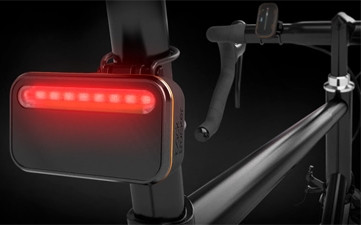
Cyclists remain vulnerable, as do all other types of non-motorised road users, partly due to the lack of technology innovations geared towards their safety.
This is according to Franz Struwig, MD of Stellenbosch-based hi-tech product development company iKubu, who notes that as far as flashing lights and cyclists' visibility are concerned, there aren't enough technologies on the South African market addressing this.
SA's national road safety campaign, Arrive Alive, states that cycling safety has become a major concern on the South African roads as there has been a significant increase in the number of serious and fatal accidents involving cyclists.
The campaign's Web site adds that competitions are well-organised in the country with very careful attention to safety details. It does note, however, that during training, cyclists have to deal with the dangers caused by other road users, harsh conditions of nature and the perils of bad road conditions.
The crux of the cyclists' safety problem, according to Arrive Alive, centres on the fact that there is a lack of planning providing for cyclists and that the traffic system is designed predominantly with car-users in mind.
"Most riders' preservation method is to ride low-risk roads, to ride in groups or ride in the yellow line in order to make themselves more visible," explains Struwig, adding that a lot of deaths, in the Western Cape at least, over the last five to10 years, seem to have occurred when cyclists had been struck from behind.
"A few groups have recently started looking at monitoring the 1.5-metre following distance and blind-spots using ultra sonic sensor systems that inform the rider of the distance between their bike and any obstacles, whether moving or stationary."
Based on this, Struwig and his team at iKubu will be making available to the market the Backtracker. The concept behind the device, he says, was born through a chance meeting with an elderly cyclist who had resorted to riding facing oncoming traffic, for fear of motorists behind him.
"We developed our micro-radar technology specifically for this application. It is quite specialised since it has to be very low cost and small in size. The device gives the user the speed and distance of rear-approaching vehicles, and alerts motorists to the cyclist's position by increasingly frequent light pulses. It's able to track vehicles from up to 140 metres and operates perfectly in low visibility conditions," says Struwig.
It's very difficult for a cyclist to spot a car that's 140 metres away in a rearview mirror, observes Struwig, and even more difficult to assess the speed of the car. If you throw in rain or mist, he says, a cyclist becomes even more vulnerable.
"Normal backlights cannot dynamically adjust their brightness and flicker patterns based on the presence of speeding cars. This means that they have to choose 'middle of the road' brightness, and stick to it. If it has a high brightness, the battery won't last long."
Technology should be used to supercharge humanity's sensory abilities, according to Struwig, allowing us to focus on the important stuff.
"I think Backtracker does this. We've created a sixth sense for cyclists, essentially allowing them to have a safer and more enjoyable ride. We take care of what's behind, so that they can enjoy what's ahead," concludes Struwig.
Backtracker will be unveiled through a crowdfunding campaign within the next few weeks where those interested can pre-order the device for a discounted rate.
Share